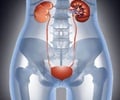Glossary
Familial hypocalciuric hypercalcemia: It is a condition which is hereditary and runs in families and is characterized by 3 things – hypercalcemia (S.Ca >10.2 mg/dl), hypocalciuria (Ca excretion rate < 0.02 mmol/L), hypermagnesemia (S.Mg>1.1 mmol/L)Milk alkali syndrome: It occurs when a person takes too much of calcium and alkali together for example in treatment of osteoporosis. If untreated it may lead to renal failure or death.
Paget’s disease: It is caused by excessive breakdown of bone followed by defective remodeling causing bone pain and misshapen bones.
William’s syndrome: It is a genetic disorder characterized by typical faces called ‘elfin’ faces. They also have visual disabilities, intellectual problems, heart defects, and periods of high blood calcium levels.
Blue diaper syndrome: It is characterized in infants by bluish urine stained diapers and a predominant feature in such babies is hypercalcemia.
Hypophosphatasia: It is a rare, sometimes fatal metabolic bone disease characterized by the deficiency of alkaline phosphatase, an important enzyme of the liver.
Nocturia: It refers to the condition in which a person has excessive urination in the night to the extent of having episodes of bed wetting even as an adult.
Polyuria: It refers to the condition of having frequent urination (more than normal).
Polydipsia: It refers to the condition of feeling thirsty excessively or excessive water intake.
Tuberculosis: It is an infectious disease caused by the bacterium mycobacterium tuberculosis which generally affects the lungs. It is usually characterized by chronic cough and has a 6 month long treatment.
Sarcoidosis: It is a systemic granulomatous disease which may or may not respond to treatment. Hypercalcemia associated with sarcoidosis has a better prognosis than that with cancer.










